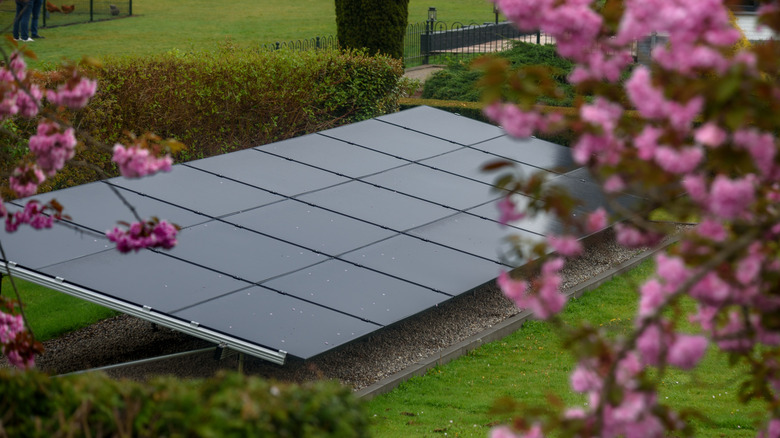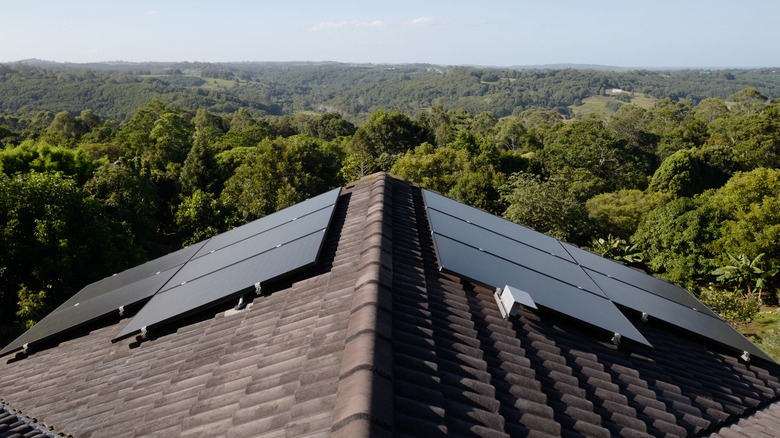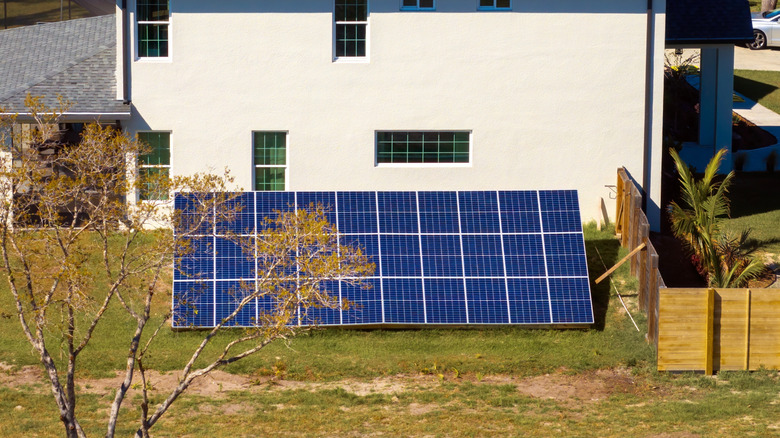Ground-Mounted Or Roof-Mounted Solar Panels: Which Is Better For Your Home?
If you're tired of your sky-high electricity bill every month or the frequent power outages in your neighborhood, then a solar panel system might just be what you need. Sure, its installation can be a bit on the pricier side, but the benefits can easily outweigh the upfront costs. That's why solar adoption has been consistently on the rise at about a 28% yearly growth, according to the Solar Energy Industries Association.
It's worth noting, though, that switching to solar power isn't as quick as connecting your home to the grid. There are a couple of considerations. For one, you need to figure out what type of solar panel inverters and solar panels to use in your home. It's also a must to decide whether or not to add a battery storage to the system. But perhaps the biggest factor to take into account is where exactly the solar panels will go. Would a roof-mounted system work for you? Or would it be better to go with ground-mounted panels instead?
Key differences between ground- and roof-mounted solar panels
The most obvious difference between ground-mounted and roof-mounted solar panels is the installation location. Roof-mounted solar panels, just as the name suggests, are solar panels set up on your roof. This is the more typical way homes get solar, primarily because roofs, being high up, are the least obstructed part of the property. This makes them the most suitable area for a solar panel system.
On the other hand, ground-mounted solar panels are installed on mounting structures right on land. Most of the time, this installation makes more sense for commercial and community applications, but you can still go this route for your home if experts find your roof unfit for solar panels.
Besides installation location, the racking materials that hold the panels are also different between these two systems. For roof-mounted, the racking equipment required is generally minimal, only including flashings, mounts, rails, and clamps.
For ground-mounted, there are two types of racking structures to pick from: fixed mounts that don't move and track mounts that change their angle to move along with the sun. Both have bigger and more components, like pipes and tubes, rails, clamps, hex-head screws, ground screws, and sometimes concrete. If you're going for a track mount, it features a gearbox to rotate the panels too. Solar trackers aren't typical for roof-mounted systems since they would weigh more than the roof can handle. They also need regular maintenance, which can be a challenge if they're already difficult to access.
Pros and cons of roof-mounted panels
Roof-mounted solar panels are considerably more popular than their ground-mounted counterparts for a host of reasons. One of these is the cost-effective installation, thanks to the fewer structures needed. According to EnergySage, roof-mounted solar panels will only set you back roughly $20,000, while it's at least double that amount for the ground-mounted system.
Another plus point of roof-mounted panels is their space-saving factor. Instead of invading the land that could be used for a different purpose, roof-mounted panels utilize the unused space on your roof. The panels on the roof also blend in better with your property compared to a separate structure on the ground, making them ideal if you prefer to keep things aesthetically pleasing.
In terms of drawbacks, probably the biggest is how dependent the system is on what your roof and the surrounding area look like. In the U.S., the conditions for a solar-ready roof are that they should be facing the south, east, or west, ideally on a flat surface. A sloped area with a maximum of 45 degrees will work too, but it shouldn't be too steep. How old and structurally sound your roof is could be an important consideration as well. You might need to replace it if it's already 20+ years old, which could cost you a lot more.
Then, there's the matter of maintenance. Although solar panels generally don't need frequent maintenance, you might still need to access them for cleaning or troubleshooting every now and again. Clearly, roof-mounted systems are harder to access for DIY cleaning or repairs, unlike ground-mounted panels that are just a quick walk away from your house.
Pros and cons of ground-mounted panels
One of the major advantages of ground-mounted solar panels over roof-mounted systems is their increased electricity generation. Unlike roof systems, where there's typically only one way to install the panels, ground-mounted solar panels provide installers with more flexibility to find the optimal orientation and position. This means they can be aligned for the best performance and power output.
If you get track mounts for your ground-mounted system, the system can produce even more energy for your home. The panels follow the sun and receive more exposure, translating to 25% to 45% more generation. With a solar tracker generating more power, you could easily limit the number of panels to use. This will scale down your system to only a small space, so you won't really need acres upon acres of land.
If you do want to add more panels because your needs increased, you're not limited by a ground-mounted system as you would be with a roof-mounted one. Roof areas are often smaller, restricting the number of panels you can install. As long as you have a larger piece of open land close to your house, you can have a large ground-mounted system installed.
Compared to roof-mounted systems with little to no ventilation, ground-mounted panels are more efficient. Their racks allow for better cooling and airflow that reduce their operating temperature and make them perform better.
However, these exact racks make the ground-mounted panels more expensive. In fact, track mounts are usually 40 to 100% more than fixed mounts. Plus, there's the continuous cost of maintaining the system. Since the panels are just on the ground, they're also readily accessible to wildlife, pets, kids, and bad actors that can damage or steal them. In terms of permits, ground-mounted systems might require more paperwork and fees since the city needs to check any underground structure on your land and overall feasibility.
Best use cases for ground- versus roof-mounted solar panels
So, when is it better to opt for roof-mounted solar panels over ground-mounted, and vice versa?
Roof-mounted solar panels are best for owners in urban homes with not enough yard space and are on a budget. Since installation and maintenance costs are significantly lower for roof systems, you can have clean energy for your home without breaking the bank. Just make sure to prep your roof by relocating antennas and other roof fixtures, clearing nearby obstacles, and asking a professional to assess its structural integrity. If you're concerned about theft or your solar panels breaking, they'll be safer installed on the roof.
Ground-mounted solar panels are ideal for users who live in a rural or farm area with unused land with unsuitable roofs — perhaps the only available area is on the north, the material is too old and weak, or there's limited space for your preferred number of panels. You might also want a ground-mounted system if you need a higher-capacity system now or see yourself adding more panels in the future. To make the scale-up more convenient, go with this type of installation instead of the roof-mounted.




